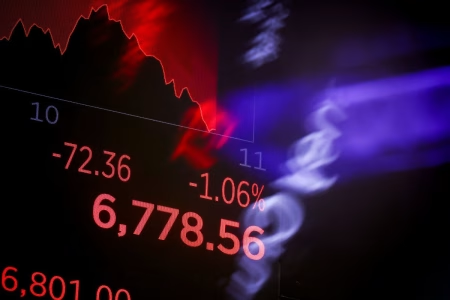Stock Market Forecasts Expert Analysis
Author: Nasir Bhatook
Stock market forecasts are a staple in the world of finance. Every year, analysts, economists, and investment firms publish predictions for the upcoming year, offering estimates for market growth, potential downturns, and overall performance. But how accurate are these predictions? A comprehensive 25-year analysis reveals that market forecasts are often far from the mark—and the discrepancies are more significant than most investors realize.
Historical Data Visualizations by Nasir Bhatook
The most common forecasted return range was between 1% and 9%, as shown in historical data visualizations (yellow plot, top left). However, the most frequent actual returns were much higher, typically falling between 11% and 19% (green plot, top right). This consistent underestimation indicates that market forecasts have tended to be overly conservative, failing to capture the real growth the market has achieved.
When we dig deeper into the numbers, the forecast errors become even more apparent. Over a 25-year span, only once did a forecast land within 3% of the actual return. Forecasts came within 5% just four times and within 10% only seven times total. That means more than 70% of the time, predictions were off by double-digit margins. For investors relying on these figures to guide decisions, this level of inaccuracy is concerning.

In terms of forecast error, the most common discrepancy fell in the 11% to 20% range (red plot, bottom left), with an average absolute error of 17%. The most frequent size of this error also fell between 11% and 19% (blue plot, bottom right). This shows a consistent pattern of forecasts missing the mark by a significant amount, making it difficult for investors to rely on them for effective portfolio planning.
A comparison between the range of forecasts and the range of actual returns adds more perspective. Over the 25 years studied, forecasted returns ranged from -7% to +25%, a 32-percentage-point span. Actual returns, however, ranged from a dramatic -37% to a +32% gain—a 69-percentage-point range, more than double that of the forecasts. This illustrates how financial predictions failed to anticipate the full extent of market volatility.

Stock Market Forecasts
Forecasts also grossly underestimated both risks and opportunities. The worst-case scenarios forecasted were five times smaller than the actual losses investors experienced, while the best-case forecasts were about 1.3 times smaller than the actual top gains. This means that investors using forecasts to assess risk exposure were often ill-prepared for real-world outcomes.
Interestingly, while forecasts correctly projected six down years over the 25-year period, they got every single year wrong. None of the forecasted down years actually saw negative returns—in fact, those years delivered an average return of +14%. Even more surprising, all six years in which the market actually declined had been forecasted to deliver gains, with an average predicted return of +8.5%. This complete reversal suggests that market forecasters struggle not just with magnitude, but direction.

Another glaring issue is the complete failure to anticipate major downturns. None of the 25 annual forecasts predicted a correction (defined as a 10% drop) or a bear market (a decline of 20% or more). As a result, the forecasts entirely missed two significant market corrections and two bear markets. More troubling, the average forecast during these major down years was a projected double-digit gain. This shows a stunning lack of foresight, especially in years when investors needed warnings the most.
Furthermore, forecasters were far more likely to underestimate market performance than overestimate it. More than two-thirds of forecasts were below the actual return. This pattern may be attributed to a preference for conservative projections—perhaps to avoid disappointing clients or to err on the side of caution. After all, most people prefer being pleasantly surprised by better-than-expected returns over facing the frustration of falling short of optimistic expectations.
What Should Investors Take From This?
This 25-year review of stock market forecast accuracy sends a clear message: year-ahead market predictions are highly unreliable. With such a consistent pattern of underestimation, missed downturns, and large forecast errors, investors should view annual forecasts with a critical eye.
While expert predictions may offer some value in understanding market sentiment or general trends, they should not be used as a primary decision-making tool. Instead, investors would benefit from adopting long-term strategies, diversification, and disciplined investment approaches that don’t depend heavily on annual forecasts.
What Are Experts Predicting Now?
Given the historical data, it’s natural to wonder: have forecasters improved, or are we repeating the same patterns? As new projections roll out each year, it’s worth revisiting this data to remember that even the most confident forecasts can be significantly off base. Understanding the limits of expert predictions can help investors stay grounded and make more informed, resilient decisions in an unpredictable market.
For more updates, visit https://tradingmarketsignals.com/








